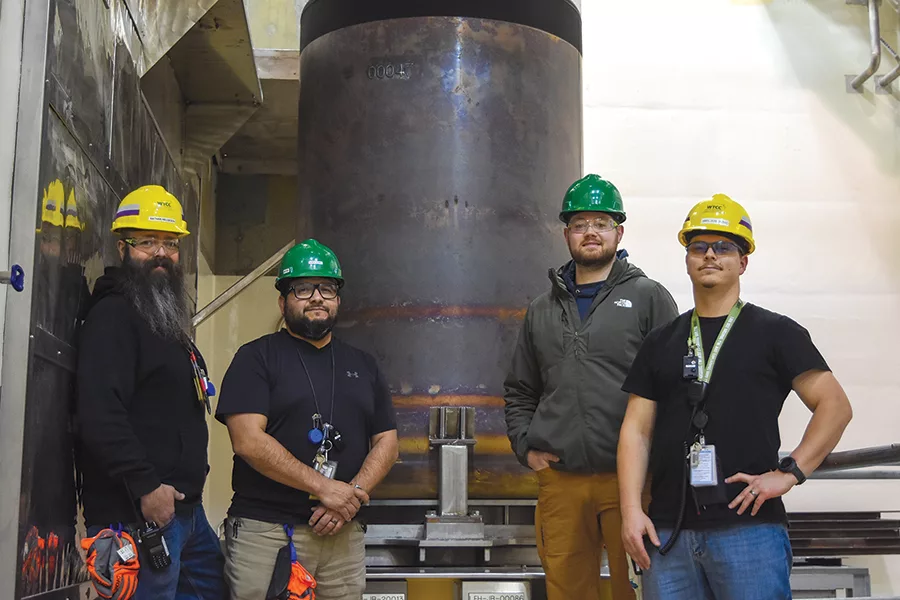
Home » Bechtel reaches key milestone with glass pour
Bechtel reaches key milestone with glass pour

Project craft professionals stand in front of the first 7.5-foot-tall and 4-foot-wide stainless-steel container filled with clean test glass. Bechtel has been working to build a plant that will treat chemical and radioactive waste stored at the Hanford site.
Courtesy BechtelDecember 14, 2023
Bechtel recently reached a key milestone in its quest to turn hazardous Hanford waste into vitrified glass.
The company, which oversees the Waste Treatment and Immobilization Plant, known around the Tri-Cities as the vit plant, completed the first set of test glass pours into a stainless-steel storage container designed to hold vitrified radioactive and chemical waste.
Vitrification is a process to convert chemical and radioactive waste into a stable form safe for storage or disposal by mixing the waste with glass-forming materials and heating them to 2,100 degrees Fahrenheit.

The inside of the first container filled with clean glass at the Waste Treatment Plant. | Courtesy Bechtel
“The Bechtel team has made history by filling the first stainless-steel container with molten test glass from the world’s largest nuclear waste melter. This accomplishment stands as a testament to our unwavering dedication to safety, excellence, and collaboration. Our team has worked tirelessly to achieve this milestone. Their tenacity and dedication are truly inspiring,” said Brian Hartman, project director and Bechtel senior vice president, in a statement.Dena Volovar, president of Bechtel National, said she was proud of the team for the attention to detail and dedication to safety that has led them to this achievement.
“This sort of focus will be vital as the team begins the rigorous cold and hot commissioning processes, and applying lessons learned from the heatup of the first melter to the second. The mission to clean up waste and protect the local community and environment is one Bechtel is proud to support,” she said in a statement.
The vit plant will use two melters to treat low-level chemical and radioactive waste dating back to World War II and the Cold War.
Earlier this summer, the Bechtel team heated the first of the two 300-ton melters in the Low-Activity Waste (LAW) Facility to 2,100 degrees Fahrenheit. Once at that operating temperature, 30,000 pounds of frit, or small glass beads, were added to the melter to form a pool of molten test glass.
A Richland company, Fluid Controls and Components Inc., or FCCI, sourced the frit for the project.
When filled, each stainless-steel container, which measures 7.5 feet tall and 4 feet wide, will weigh about 6.8 metric tons.
Once fully operational, the LAW Facility will process 5,300 gallons of tank waste each day and fill 3.5 containers each day.
The containers of vitrified low-activity waste will be trucked from WTP to the Hanford Site’s Integrated Disposal Facility.
Latest News Local News
KEYWORDS December 2023 hanford





